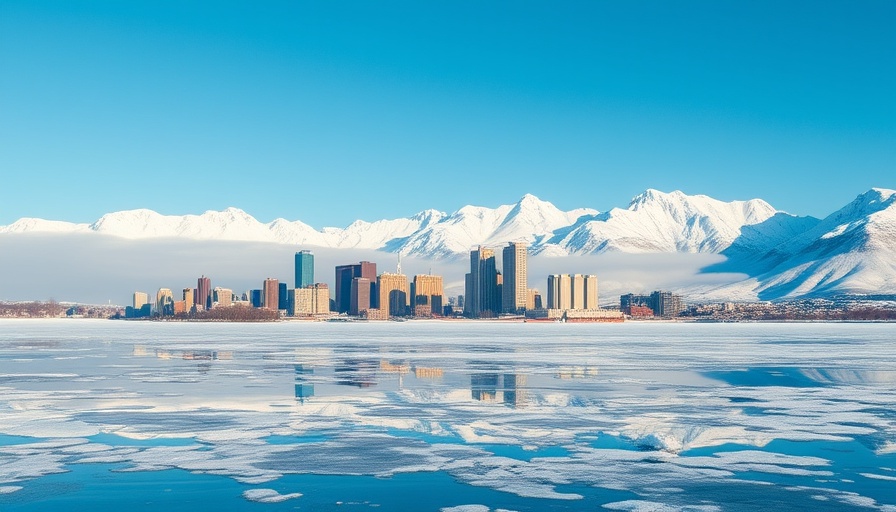
Understanding Cold States in a Warming World
As summer approaches and temperatures begin to rise, many wonder what the coldest states in the U.S. have to offer for those looking to escape heat waves. The cold states not only provide a unique charm and outdoor experiences but also contrast sharply with the warm weather experienced elsewhere in the country. Alaska tops the list as the coldest state, earning its icy reputation with an average annual temperature of 28.1°F and a record low of an astonishing -80°F. Municipalities like Fairbanks and Utqiagvik face extreme weather conditions that challenge residents and businesses alike.
Despite their chilling climates, these states embody resilience, often adapting to changes brought about by climate change. Alaska, for instance, has witnessed significant temperature increases, warming at twice the rate of the rest of the U.S. This warming trend presents new challenges and innovations for residents as they navigate a landscape unfamiliar to previous generations. In spite of harsh winters, the allure of snowy landscapes, ice fishing, and winter sports continues to attract tourists and residents alike.
Why Move to the Cold States?
For those considering a move to one of these cold states, the environment offers not just picturesque views but a slower pace of life, access to outdoor activities such as skiing and snowboarding, and communities that thrive on closeness and support. Moreover, real estate market trends in these areas may be drawing attention as people see value in investing in properties that promise unique lifestyle benefits.
The cold invites coziness and warmth inside homes, leading many to cherish gatherings by the fireplace while snowstorms rage outside. For those seeking homes for sale, states like North Dakota and Minnesota open the door to many opportunities, from sprawling farms to modern homes equipped for extreme weather.
Comparative Overview of Coldest States
To better understand what makes these states coldest, each state can be grouped by its temperature and unique climate traits:
-
Alaska:
The crown jewel of cold states offers wild landscapes and wildlife, but not without recent challenges posed by climate change.
-
North Dakota:
Known for its expansive farmlands and harsh winters, it's also attracting a younger demographic for its affordable housing and job opportunities.
-
Minnesota:
Often deemed the land of 10,000 lakes, it provides ample recreation options and a unique cultural tapestry that blends urban and rural lifestyles.
-
Maine:
The snowy terrain is a draw for vacation rentals, particularly during the winter months when tourists flock to ski resorts.
-
Wyoming:
Home to Yellowstone National Park, it benefits from outdoor tourism but faces challenges related to housing availability due to its rural nature.
Weather Trends in the Future
As climate patterns shift, we can expect continued fluctuations in weather across these states. Years like 2023-2024, notably warmer in the U.S., may give way to additional unpredictable weather events. For homeowners and renters, understanding these trends becomes crucial when considering investment potential. Living in colder states often involves strategic considerations—how to insulate homes, winterize vehicles, and plan for seasonal utility costs. Real estate agents are well-equipped to provide insights into the properties but also the living conditions one can expect in these areas.
Your Cold Weather Adventure Awaits
Embarking on a new life in one of the coldest states could be a refreshing change of pace from the heat and a transition to a lifestyle rich with unique experiences. Individuals seeking real estate job opportunities, alongside those looking for apartments for rent or houses for sale, will find the cold states not just a place of harsher weather, but also a community with heart and adventure. If you’re considering a move, now may be the perfect time to explore your options.
 Add Row
Add Row  Add
Add 



Write A Comment